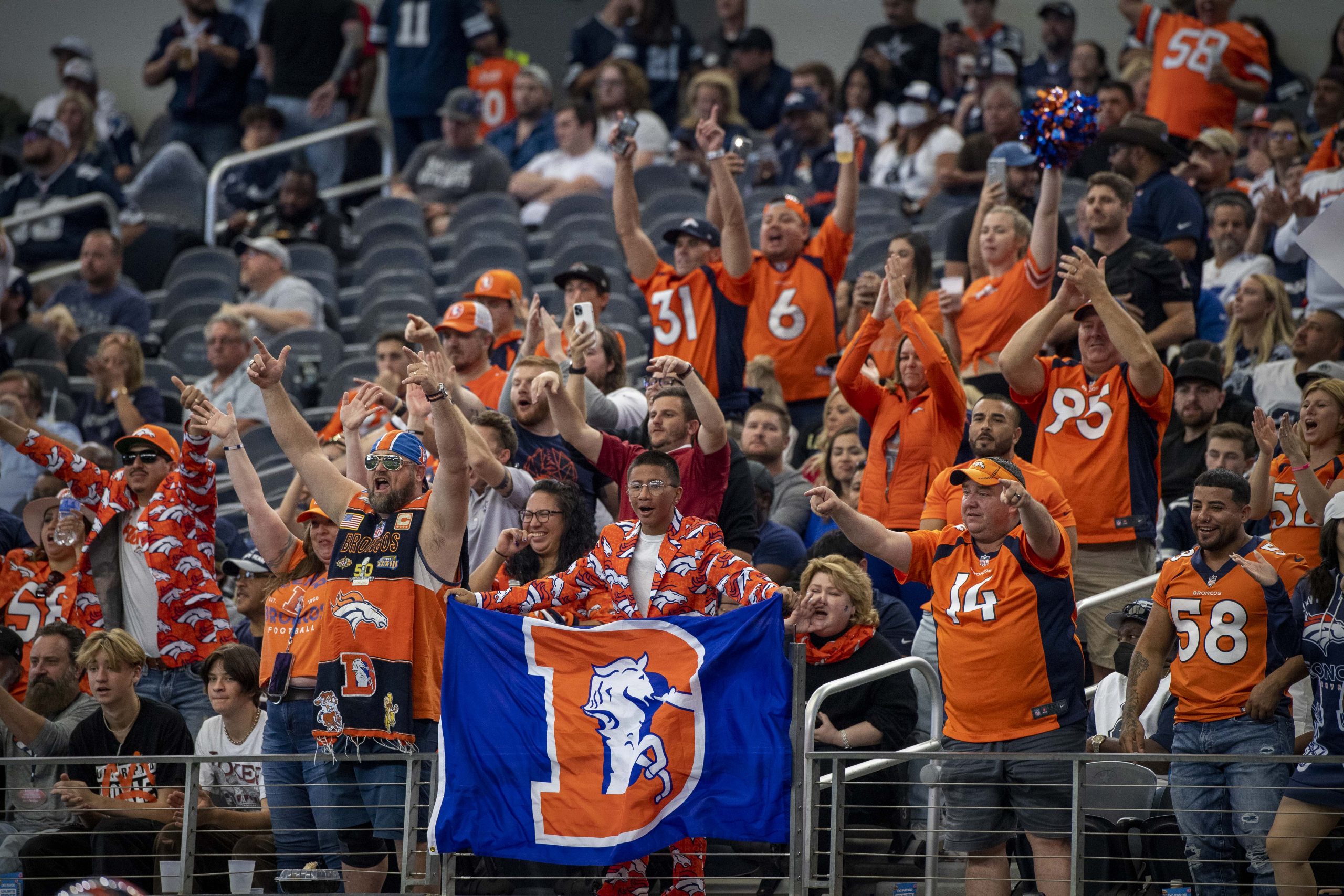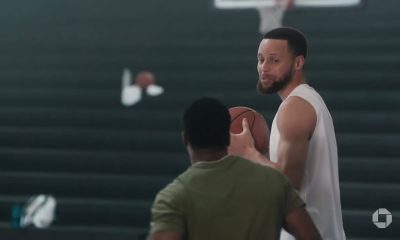NIL
Seton Hall basketball fans bracing for Kadary Richmond return with St. John's
For three years at the Prudential Center, Jack Fortin rooted like crazy from his baseline courtside seat for Kadary Richmond.Like Stackhouse, Passner feels bad that Holloway now has to face off against the star he forged. “I will be cheering for him during introductions Saturday, although I might get punched in the head,” Passner said. […]



For three years at the Prudential Center, Jack Fortin rooted like crazy from his baseline courtside seat for Kadary Richmond.Like Stackhouse, Passner feels bad that Holloway now has to face off against the star he forged. “I will be cheering for him during introductions Saturday, although I might get punched in the head,” Passner said. “But when the game starts, he’s the enemy.”On Saturday Richmond returns to Newark for the most anticipated game on the Hall’s schedule (8 p.m. tip, Fox Sports 1). Fortin and his cohorts, who sit just a few feet away from the Johnnies’ bench, will be ready.

“We’re out for blood at courtside,” the senior said. “He had options to go other places and make money, but he had to pick St. John’s and the evil Rick Pitino. It’s like going from the Sox to the Yankees. So the Blue Beard Army, we’re ready. We’re going to give him a nice welcome.”The students in the front row plan on spelling out a special written message for Richmond. They’ll offer a classic verbal greeting, too.“He’s going to hear the boos,” Fortin said. “It’s a slap in the face, what he did.”Welcome to college basketball in 2025, where players change schools like socks – and sometimes flip to a rival. Richmond is the first Pirate ever to transfer within the Big East, a maneuver made possible by the onset of free agency.The Hall did get a St. John’s transfer in 2023 – guard Dylan Addae-Wusu – but there was no outcry from the Johnnies’ faithful about it because the newly arrived Pitino was reshaping their roster.Richmond’s departure was different. He was a star at the Hall, earning first-team All-Big East honors after averaging 15.7 points, 7.0 rebounds, 5.1 assists and 2.2 steals last winter. And he’d reached that level thanks in no small part to Pirates head coach Shaheen Holloway, who’d polished the gem in a way that Richmond’s previous coaches could not.Although Richmond’s move across the river had a strictly business feel – he seemed to genuinely enjoy his time in South Orange, but St. John’s was wielding a much larger name-image-likeness war chest – it felt deeply personal to many Hall fans. They’ll be processing that as the red-hot Johnnies (15-3 overall, 6-1 Big East) look to beat the struggling Pirates (6-11, 1-5) for just the second time ever in Newark.This is what four of them, all season-ticket holders, had to say about it.The torn fan





NIL
Louisiana Joins NCAA Revenue Sharing, Launches ‘Cajuns Edge’ Fund
Highlights UL Lafayette will opt into the NCAA revenue sharing model, allowing direct payments to student-athletes starting July 1 New “Cajuns Edge” fund through RCAF provides tax-deductible giving directly to the athletic department instead of third-party collectives Baseball and softball programs can now offer up to 34 and 25 full scholarships, respectively, up from the […]

Highlights
- UL Lafayette will opt into the NCAA revenue sharing model, allowing direct payments to student-athletes starting July 1
- New “Cajuns Edge” fund through RCAF provides tax-deductible giving directly to the athletic department instead of third-party collectives
- Baseball and softball programs can now offer up to 34 and 25 full scholarships, respectively, up from the previous 11.7-scholarship limitations
- Athletic department achieves budget-neutral revenue sharing through internal cost-saving measures and strategic fundraising
- Local businesses gain new opportunities for authentic NIL partnerships with Ragin’ Cajuns athletes
New rules allow direct athlete payments starting July 1, with a streamlined donor process and expanded scholarship opportunities
LAFAYETTE, La. (103.3 The GOAT) — The University of Louisiana will participate in the NCAA’s new revenue sharing model following federal court approval of the House v. NCAA settlement. The ruling allows college athletic departments to directly pay student-athletes for the first time, with schools able to share up to $20.5 million annually starting July 1.
Deputy Athletic Director and RCAF Executive Director Trey Frazier confirmed the university’s participation in an interview with The Advocate.
“We’re excited about this case,” Frazier said. “We’re going to opt into the revenue-sharing model.”

RCAF to Handle Direct Fundraising
Under the previous system, payments to UL athletes required fundraising through the Krewe Allons collective, a volunteer group operating separately from the athletic department. The new model allows fundraising directly through the Ragin’ Cajuns Athletic Foundation.
“What that means is we’ll be able to fundraise for dollars through the RCAF,” Frazier said. “That won’t be our only means, but we’ll be able to do some things with ticketing with events and with budgeting. We can fundraise and have a little bit more control over the process, and we think our fan base will appreciate that avenue a little bit more.”
(from ragincajuns.com)
The change provides tax-deductible contributions and priority benefits for donors. “If you have a deep-seated relationship with someone from our staff, you’d probably rather just work directly with me in terms of your overall support for the program,” Frazier said. “Plus, it’s tax deductible and you’re getting priority benefits and points and that kind of stuff.”
New Cajuns Edge Fund Launches
Athletic Director Dr. Bryan Maggard announced in a statement to supporters that the athletic department will launch the “Cajuns Edge fund” through RCAF. The fund will allow donors and local businesses to support revenue sharing with student-athletes.
“In the upcoming weeks, we will share detailed information on how you can directly support revenue share through the RCAF’s new Cajuns Edge fund,” Maggard said. “By investing directly through our athletics foundation, individuals can receive tax benefits along with priority benefits and points.”
The athletic department identified cost-saving opportunities to achieve budget-neutral revenue sharing for the upcoming fiscal year.
Scholarship Limits Expand Significantly
The settlement establishes new roster limits while allowing full scholarships for all roster spots. Baseball programs can now offer up to 34 scholarships, and softball can offer up to 25. Both sports previously operated under an 11.7-scholarship limit.
UL baseball coach Matt Deggs said the changes will provide structure for mid-major programs. “NIL is going to be flipped upside down a little bit for most programs with revenue sharing now,” Deggs said. “It’ll be a little more cut and dried with a budget that we can supplement guys with. That’s what the game will be moving forward for every school.”
Frazier noted the competitive implications within the Sun Belt Conference. “We need to make sure that we’re supporting baseball and softball at a rate that’s competitive in the Sun Belt,” he said. “You could see how you’d be at a competitive disadvantage if you were at 11.7 and somebody else had say 20 scholarships, plus whatever they’re doing with revenue sharing and NIL.”
Budgeted Approach to Player Compensation
Coaching staffs will receive predetermined revenue sharing allocations similar to traditional budget planning.
“It’ll be more like every year when we sit down with the coaches, you have more like a budgeted number,” Frazier said. “They know they’ll have X dollars to work with.”
The athletic department will reveal specific revenue-sharing figures for each program in the coming weeks. Frazier said coaches will know their allocations include both fundraised and budgeted components.
NIL Partnerships Continue with New Structure
Student-athletes can still receive NIL compensation from third-party businesses under the new system. UL has existing NIL partnerships, including deals with student housing providers and local retailers.
The athletic department’s largest NIL campaign involves more than 30 student-athletes from various sports in an anti-vaping initiative with the Louisiana Attorney General’s Office. NIL deals of $600 or more must now be reported through a new platform called NIL Go.
Basketball Program Optimism
attachment-quannas white
The revenue sharing model arrives as UL hired a new men’s basketball coach, Quannas White. Frazier expects increased attendance and support for the program.
“I’d be pretty disappointed if attendance doesn’t grow and support doesn’t grow at a pretty good rate this year,” he said. “Almost every person I talk to is saying, ‘Yeah, I’m going to get some season tickets,’ or ‘I’m excited and going to come to more games.'”

Implementation Timeline
Schools must designate by July 6 any current student-athletes who will remain above new roster limits through graduation. Fall sports must comply with roster limits by the start of the 2025-26 academic year, except for designated athletes.
The settlement includes $2.8 billion in back payments to athletes who competed between 2016 and 2024. Revenue sharing caps will increase by at least 4% annually, with baseline adjustments in years four, seven, and ten.
According to Maggard, the athletic department will provide transparent communication about implementation details. “Our staff is committed to working with each of you through transparent, informative and honest communication,” he said.
The 10 Highest Paid Sportscasters in America
Gallery Credit: Joe Cunningham
NIL
Ryan Day Revolutionizes NCAA with Bold NIL Strategy
A New Era in College Football The landscape of college football is rapidly evolving, driven by the transformative power of Name, Image, and Likeness (NIL) agreements. As programs across the nation navigate this new frontier, Ohio State University’s head coach Ryan Day has made a strategic move that could redefine the competitive balance in the […]

A New Era in College Football
The landscape of college football is rapidly evolving, driven by the transformative power of Name, Image, and Likeness (NIL) agreements. As programs across the nation navigate this new frontier, Ohio State University’s head coach Ryan Day has made a strategic move that could redefine the competitive balance in the sport. This comes in response to the ambitious financial strategies rumored to be in play at other top programs, including the $40 million luxury plans associated with Steve Sarkisian’s Texas Longhorns.
Ohio State’s Innovative Approach
With the NCAA settlement era ushering in a wave of regulatory changes, Ohio State has unveiled a groundbreaking NIL strategy designed to empower its athletes while maintaining the program’s storied tradition of excellence. This initiative reflects a broader commitment to adapting to the modern collegiate landscape, where athletes are increasingly recognized for their commercial potential.
Ryan Day’s approach is not just about matching financial figures but about creating a sustainable model that benefits the athletes and the program. By focusing on equitable distribution and strategic partnerships, Ohio State aims to provide its players with opportunities that extend beyond the field, preparing them for life after college sports.
The Competitive Edge
In the high-stakes world of college football, financial resources and strategic planning are crucial for maintaining a competitive edge. While rumors swirl about Steve Sarkisian’s lavish plans at Texas, Ohio State’s response is rooted in pragmatism and foresight. Rather than engaging in an arms race of spending, the Buckeyes are focusing on building a robust support system for their athletes, ensuring they have the tools and resources needed to succeed both academically and athletically.
This strategy not only positions Ohio State as a leader in the NIL era but also sets a precedent for other programs looking to balance financial ambition with athlete welfare.
Looking Ahead
As the dust settles on these initial NIL developments, the implications for college football are profound. Programs like Ohio State are setting the stage for a future where athletes are empowered and programs are strategically positioned for success. Ryan Day’s vision reflects a deep understanding of the evolving dynamics of college athletics and a commitment to leading the way in this new era.
In the grand tapestry of college sports, Ohio State’s innovative NIL strategy is a testament to the program’s enduring legacy and its readiness to embrace the future. The coming seasons will reveal the true impact of these initiatives, but one thing is certain: the Buckeyes are poised to remain at the forefront of college football’s new age.
NIL
Greg McElroy Exposes College Football’s NIL Go Chaos
Greg McElroy’s Bold Critique of NIL Go and Its Impact on College Football In a landscape where college football is constantly evolving, Greg McElroy has emerged as a voice unafraid to challenge the status quo. On a recent episode of his podcast, the former Alabama quarterback delivered a searing analysis of the NIL Go initiative, […]

Greg McElroy’s Bold Critique of NIL Go and Its Impact on College Football
In a landscape where college football is constantly evolving, Greg McElroy has emerged as a voice unafraid to challenge the status quo. On a recent episode of his podcast, the former Alabama quarterback delivered a searing analysis of the NIL Go initiative, designed to regulate the financial dealings in college sports. His insights have sparked a conversation about the unintended consequences of this ambitious system.
NIL Go: A System Under Scrutiny
The NIL Go program was introduced with the intent to bring transparency and order to the complex world of Name, Image, and Likeness (NIL) deals. It promised to streamline the process, ensuring athletes could benefit from their talents while maintaining the integrity of college sports. However, McElroy’s critique suggests that the system may have opened Pandora’s box, revealing challenges that were previously hidden.
McElroy’s Insightful Perspective
McElroy’s perspective is grounded in his deep understanding of the sport’s inner workings. He argues that while NIL Go aims to simplify, it may inadvertently complicate matters. “The system was supposed to be a solution,” McElroy remarked, “but it seems to have created a new set of problems that no one anticipated.” His words resonate with those who worry that the initiative might be more of a cosmetic fix than a substantive change.
The Broader Implications for College Football
The introduction of NIL Go has sparked a broader debate about the future of college athletics. McElroy’s critique highlights a critical tension between maintaining the amateur nature of college sports and embracing the commercial opportunities that NIL deals present. This tension raises questions about the long-term sustainability of the current model and whether it truly serves the best interests of student-athletes.
Reflecting on the Future
As college football continues to navigate these turbulent waters, McElroy’s candid assessment serves as a reminder of the complexities involved in reforming a deeply entrenched system. His critique invites stakeholders to reconsider the path forward, ensuring that changes benefit the athletes without compromising the essence of college sports. The conversation he has ignited is not just about NIL Go but about the very future of college athletics—a future that demands careful thought and deliberate action.
NIL
In new bills, Congress’ most direct plan yet to empower NCAA on post-House rules takes shape
With the House v. NCAA settlement now finalized and approved, a new push within Congress will attempt to turn it into law and give the NCAA and conferences more power to enforce their rules. A discussion draft of a bill obtained by The Athletic outlines an upcoming proposal in the House of Representatives’ Committee on […]

With the House v. NCAA settlement now finalized and approved, a new push within Congress will attempt to turn it into law and give the NCAA and conferences more power to enforce their rules.
A discussion draft of a bill obtained by The Athletic outlines an upcoming proposal in the House of Representatives’ Committee on Energy and Commerce that would codify most of the federal support the NCAA has lobbied for in recent years. Although previous congressional efforts haven’t gained much steam, college sports leaders hope the settlement will finally provide the spark for something to get done. The Republican-led committee would work hand-in-hand with two other House committees for a three-pronged approach this week that would do the following:
- Fully deputize the Collegiate Sports Commission (or another entity) to enforce the settlement rules, such as requiring athletes disclose third-party name, image and likeness deals worth more than $600 and allow the prohibition of compensation that is not considered fair market value
- Allow an entity to establish a revenue-sharing cap; the one instituted by the settlement begins at around $20 million for the 2025-26 academic year
- Pre-empt state NIL laws with this national NIL law
- Allow the NCAA, conferences or another entity to establish and enforce rules around transfers, eligibility length and the paying of recruits
- Declare that college athletes are not employees
- Require athlete agents to register with an entity such as the CSC or NCAA
A House subcommittee is scheduled to discuss the draft, dubbed the SCORE Act and sponsored by Florida Republican and subcommittee chair Gus Bilirakis, at a Thursday hearing. To support it, the House’s Judiciary Committee is expected to discuss a bill for antitrust protections around these items, while the House’s Education and Workforce Committee will work to codify that athletes are not employees. The Washington Post first reported on the committee drafts.
“This discussion draft comes at a time of historic transition for college athletics,” the ACC, Big 12, Big Ten, Pac-12 and SEC said in a joint statement to The Athletic. “In the absence of federal standards, student-athletes and schools have been forced to navigate a fractured regulatory framework for too long. Following the historic House settlement, this draft legislation represents a very encouraging step toward delivering the national clarity and accountability that college athletics desperately needs. We urge lawmakers to build on this momentum and deliver the national solution that athletes, coaches, and schools deserve.”
The main Energy and Commerce bill, if passed, would also codify several athlete protections Democrats have asked for, requiring schools to provide injury care for athletes for at least two years after graduation, catastrophic injury insurance and additional mental health services and give “autonomous” authority to team physicians and trainers over player health and return-to-play decisions. It would also make law that schools cannot pull scholarships or aid over performance or injury. Many of these benefits are already allowed or required by the NCAA.
Republican and college sports officials who spoke to The Athletic on the condition of anonymity said they hope those athlete protections are enough to get some Democrats on board. Democratic representative Lori Trahan of Massachusetts, a former Georgetown volleyball player who is on the Energy and Commerce Committee, released a statement on Saturday expressing concern that congressional action could choke off gains made by athletes.
Thus far, congressional attempts on a college sports bill have not gone far, despite full Republican control of the legislative branch to streamline the process. One Democratic congressman who spoke to The Athletic questioned whether the full House would have time for the issue amid other more pressing topics.
A bipartisan group of senators led by Ted Cruz (R-Texas) have spent months working on a potential bill. President Trump has considered creating a presidential commission on college sports. SEC commissioner Greg Sankey and Notre Dame athletic director Pete Bevacqua played golf with Trump on Sunday.
“I don’t think this is about drawing lines between Democrats and Republicans or the House and Senate,” Sankey said Monday. “I think this is an opportunity for our governmental leaders, our political leaders, to come together around solutions to support our Olympic development program, to support college football and every one of our sports that flows off of that, including those that are labeled as non-revenue sports, to provide additional support for women’s sports.”
The finalization of the House settlement could be the inflection point for something to get done. NCAA president Charlie Baker has said that college sports needed to put together a plan to take to Congress. That has now happened.
“The big message from the federal government is you have to do everything you possibly can on your own, then come talk to us,” Baker said last September on a panel alongside Nick Saban.
In a letter Baker sent to members of Congress over the weekend obtained by The Athletic, the NCAA president pointed to the House settlement as needed progress, while asking for help on establishing antitrust protections, pre-empting state laws and keeping athletes from being employees.
“The progress we’ve made, especially with the House settlement, represents a significant step forward,” Baker wrote. “And, in the narrow areas where we lack the authority needed to address outstanding issues, we look forward to working with you and your staff to advance solutions that will ensure that college sports continue to provide fair opportunities to all student-athletes, for generations to come.”
College sports leaders have said the House settlement wouldn’t fix all their problems, that it was only a first step. Now the focus moves to accomplishing step two, convincing Congress that it’s done enough to get something made into federal law.
(Photo: Alex Wroblewski / AFP via Getty Images)
NIL
It’s Lamborghini season in Austin as Longhorns put NIL wealth on full display
The Texas Longhorns have been at the top of college football’s game in terms of recruiting in recent years. In fact, Texas’ 2024 recruiting class was ranked No. 6 overall, according to 247Sports Composite Rankings last year; and in 2023, No. 3 overall, according to 247Sports. There’s room to improve, in other words. Enter Texas […]

The Texas Longhorns have been at the top of college football’s game in terms of recruiting in recent years. In fact, Texas’ 2024 recruiting class was ranked No. 6 overall, according to 247Sports Composite Rankings last year; and in 2023, No. 3 overall, according to 247Sports.
There’s room to improve, in other words.
Enter Texas football’s Lamborghini roster.
More from USA Today:
Last weekend, Texas “showcased a fleet of Lamborghinis outside its football facilities as it hosted some of the nation’s top high school prospects for official visits. The luxury cars, parked in front of the Moncrief Athletics Center next to Darrell K Royal–Texas Memorial Stadium, were impossible to miss as blue-chip recruits arrived … . The spectacle is part of an ongoing trend for Texas, which first rolled out the exotic cars during last year’s recruiting cycle. This year’s event featured around 14 to 15 top targets from the Class of 2026, including five-star running back Ezavier Crowell and Lamar Brown, as well as four-star edge rusher Jamarion Carlton, cornerback Davon Benjamin and four-star quarterback Kavian Bryant.”
NIL
Surprising Big 12 School Believed to Have Most Expensive Budget for Paying Players
The House v. NCAA court case was settled late last week, allowing schools across the country to begin directly paying student-athletes for the first time. It’s a new frontier across college athletics, unlike anything we have ever seen. How schools manage to navigate directly compensating players will have a significant impact on the field. With […]

The House v. NCAA court case was settled late last week, allowing schools across the country to begin directly paying student-athletes for the first time.
It’s a new frontier across college athletics, unlike anything we have ever seen. How schools manage to navigate directly compensating players will have a significant impact on the field.
With the new era upon us, the schools that have the most expensive rosters in the sport may not be who fans would expect. According to a new report from Brandon Marcello of CBS Sports, the most expensive athletic program next season may hail from Lubbock.
Per Marcello, Texas Tech’s fundraising arm, the Red Raider Club, will be responsible for generating $14 million annually to help fund its $20.5 million revenue-sharing model. When adding in NIL, Texas Tech is expected to pay $55 million across all of its programs in the upcoming school year, making it “perhaps” the highest-paying college athletics program in the country.
It’s believed Texas Tech will pay its players $55 million (revenue sharing + NIL) among all its programs this year, making the Red Raiders perhaps the highest-paying college athletics program in the country, sources tell @CBSSports. https://t.co/Kw7KdwJCzA
— Brandon Marcello (@bmarcello) June 9, 2025
The Red Raiders have one of the nation’s top basketball programs, and feel that they’re on the rise in football as well. Now they’ll have plenty of money to spend as they look to take both programs, and the athletic department as a whole, to the next level.
More College Football on Sports Illustrated
-

 Professional Sports3 weeks ago
Professional Sports3 weeks agoJon Jones answers UFC retirement speculation as fans accuse champion of 'holding the belt …
-

 Motorsports3 weeks ago
Motorsports3 weeks agoWhy IHOP Rode With Dale Earnhardt Jr. In Amazon NASCAR Debut
-

 NIL2 weeks ago
NIL2 weeks ago2025 NCAA Softball Tournament Bracket: Women’s College World Series bracket, schedule set
-

 High School Sports3 weeks ago
High School Sports3 weeks agoToday in the MHSAA
-

 Health5 days ago
Health5 days agoOregon track star wages legal battle against trans athlete policy after medal ceremony protest
-

 College Sports1 week ago
College Sports1 week agoIU basketball recruiting
-

 Professional Sports5 days ago
Professional Sports5 days ago'I asked Anderson privately'… UFC legend retells secret sparring session between Jon Jones …
-

 Rec Sports2 weeks ago
Rec Sports2 weeks agoJ.W. Craft: Investing in Community Through Sports
-

 Youtube3 weeks ago
Youtube3 weeks agoAnt greets A-Rod & Barry Bonds before Game 3
-

 Rec Sports2 weeks ago
Rec Sports2 weeks agoScott Barker named to lead CCS basketball • SSentinel.com









































 ‘Pacers got HOT…Cavs ran out of gas’ – Danny Green | SportsCenter
‘Pacers got HOT…Cavs ran out of gas’ – Danny Green | SportsCenter



















 Stephen A. responds to LeBron’s NBA coverage criticism | First Take
Stephen A. responds to LeBron’s NBA coverage criticism | First Take






